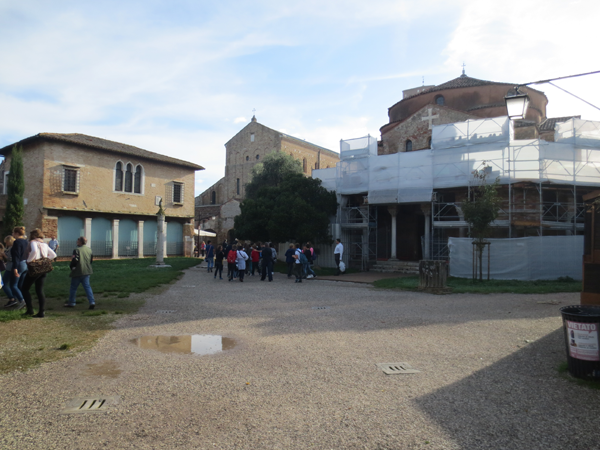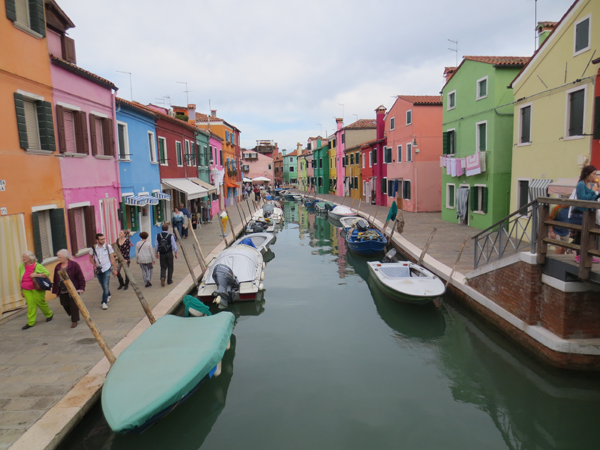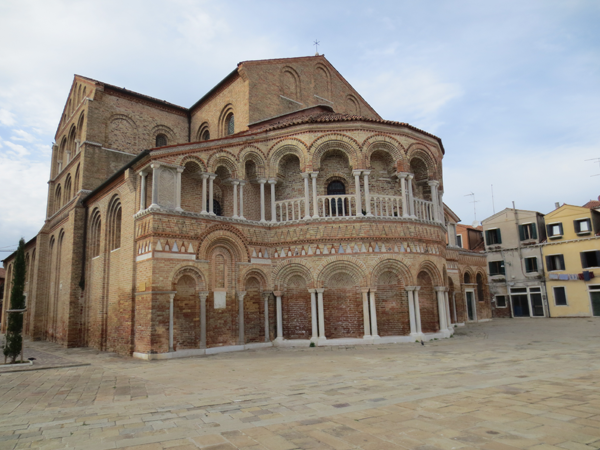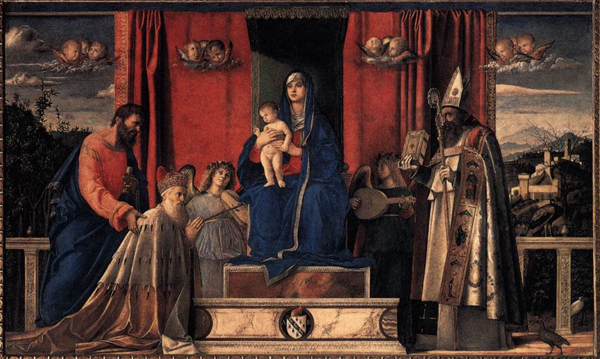This past Tuesday, it was finally time for our first out-of-town trip, where we went to the nearby islands of Torcello, Burano, and Murano. We met up with our two Italian professors and the rest of the Warwick students bright and early to catch the vaporetto, or Venetian waterbus, to Torcello. Arriving in Torcello was like entering a different world, for whilst Venice is chock-full of tourists, narrow alleys and buildings squeezed into every available inch, Torcello at 9 am was quiet, grassy, and relatively empty. After a leisurely stroll along a canal, we arrived at the core of the island, which consisted of just a tiny museum, the old judicial palace, and two churches: Torcello Cathedral and the Church of Santa Fosca.
The island has quite a rich and interesting background, as it was the first inhabited island in the lagoon, and thus marked the beginning of Venice’s history. Though Torcello once had around 20,000 inhabitants, these days only about 70 people live there. In 639 the see of the bishopric of Altino was moved to the island following barbarian invasions on the mainland, and by 860 the first Cathedral was built, which we learned about while standing inside the building, quite different from what I’m used to at Carleton!
The most striking part about the Cathedral was the beautiful interior decoration, which used stone and glass in very different and interesting ways. Some of the ways these materials were used were in the opus sectile (marble inlay) floor in a beautifully rich pattern, spolia in the form of 6th century columns, an original 11th century mosaic in the apse, and a huge, gilded series of mosaics above the western entrance, seen below.
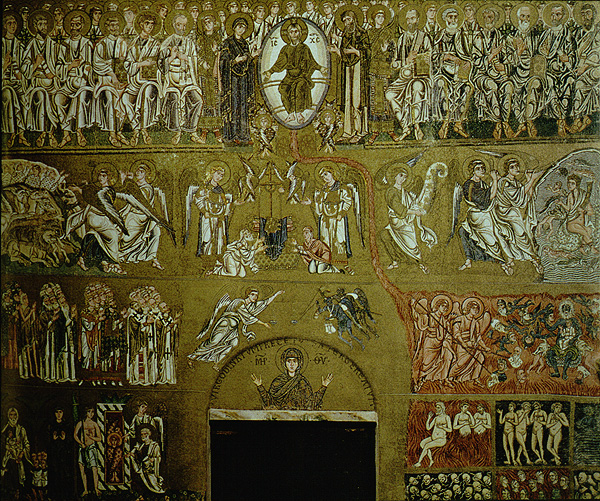
The mosaic matches the late 12th century mosaics at St. Mark’s Basilica in Venice, and is believed to have been done by Venetian mosaicists trained after Greek masters.
We then hopped on another vaporetto to our next destination, the colourful island of Burano, where we were allowed to wander the streets and admire the painted houses, as well as grab some lunch and refuel before moving on to nearby Murano.
Murano is these days most known for its glass production, but we came here to look at two churches specifically: Santa Maria e San Donato and San Pietro Martire.
I had the chance to learn about the 12th century church of Santa Maria e San Donato in Professor Coffman’s Medieval Art and Architecture class last year (which I highly recommend!), and though we were shown a series of beautiful images from the church, nothing quite compares to experiencing a building in three dimensions, in its natural environment. This is one of the reasons why I was so excited to go to Venice, as an architectural history student it allows me to experience and engage with these kinds of buildings in a way that no classroom ever could allow me to.
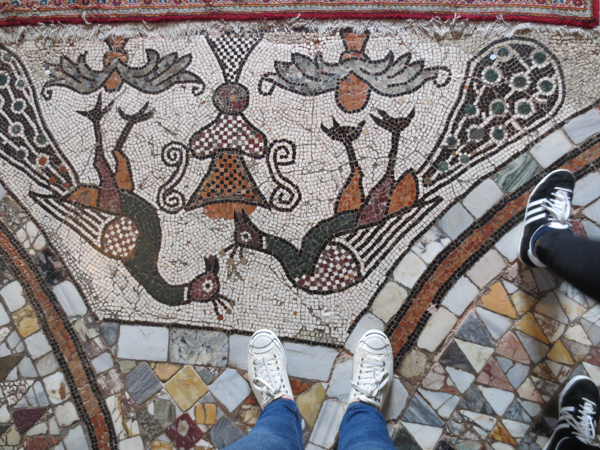
I broke the rules and took a sneaky picture, so it features my sneakers, someone else’s sneakers, and two different flooring techniques: Opus Sectile (small, geometric, marble inlays) and Opus Tessellatum (figurative images, animals)
Finally, we visited the Church of San Pietro Martire, a short walk away, where the main focus of the on-site lecture was on the Barbarigo Altarpiece, painted by Giovanni Bellini in 1488 for the Doge Agostino Barbarigo.
Though it was a long, mentally and physically strenuous day, I really enjoyed the trip and felt like I learned a lot. We have several trips lined up in the next few weeks, including trips to Padua and Vicenza, where the highlight for me will definitely be the chance to see Palladio’s villas in the flesh!
